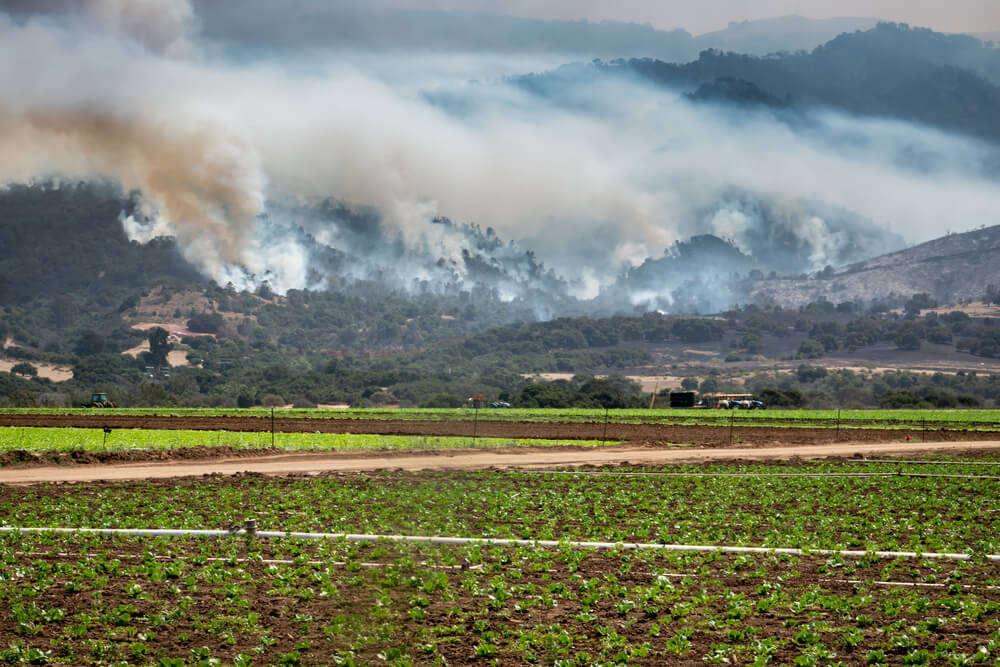The big story isn’t in Washington. It’s out West. It’s the drought.
After the fires have gone out (there are 80), the crops have failed, the herds have been culled, and the home lawns and gardens have shriveled up, the re-engineering of the West will have to begin. Many things will have to change. Technology will be asked to handle some changes.
The West must innovate both socially and technologically because you can’t move nearly 80 million people to greener lands.
There are no easy fixes for the drought that has eight Western states – Montana, Idaho, Washington, Oregon, California, Nevada, Arizona, and New Mexico — by the throat. This is a calamity with a capital C, but the enormity of the problems has hardly dawned in the East — even when the smoke from the western fires reaches all the way to New York City.
The problem here, I am sorry to say, is my fellow denizens in the Fourth Estate. There is a national disaster that may progress to a national tragedy with people losing their farms, businesses, and homes, and yet — especially on the networks — politics is all.
What is happening in the West is analogous to what happened during the Arab oil embargo, the effects of which have lasted more than two decades. The crisis had been building – there was a gasoline shortage in the summer of 1973 before the embargo – and it didn’t end until fracking technology liberated hydrocarbons in tight formations.
The West has been struggling with its water issues since the 1940s. Some mighty civil engineering work with canals and dams has helped alleviate them, or at least has postponed the reckoning.
That day of reckoning is now at hand: Eight states, and possibly more, will have to make major adjustments — not just to get through this summer, but for years and years. The jig is up; there is no quick fix.
All the water impoundments are below their historic low levels and the summer is far from over. The West’s megadrought, which began in 2000, hasn’t run its course, according to experts. The rains won’t come miraculously next year; the crucial snowpack that sustains the whole region with fresh water and hydropower, may not come either.
Revolutionary changes will be needed, especially in California. Farmers will have to look at the ways the Israelis have reduced water use through drip-feed irrigation and drought-resistant crops. They may have to stop growing thirsty crops like alfalfa.
Wastewater will have to be recycled, used again and again; first for farms and gardens and later, as the filtering technology improves, in homes. Orange County is already a leader here.
New, covered aqueducts will have to be built to convey more efficiently the limited supplies from the rivers that sustain much of the West, the Colorado and the Columbia.
Finally, there is desalination. Everyone talks about it as though it is a mature technology ready to be hooked up, bought off the shelf, so to speak. Alas, it isn’t so.
The primary technology for desalination, used in places like the Arabian Gulf, is reverse osmosis: Seawater is driven through membranes and the potable water is captured, leaving all kinds of impurities in the rejected water, as well as the salt. This brine can’t be returned to the ocean: It forms destructive plumes that kill all life, including that on the seafloor.
So, to make a dent in the water needs of California, there would have to be a major desalination industry with new ways of dispersing the brine. Further, the desalination process consumes a lot of electrical energy, something that California doesn’t have, especially when there is sparse snowpack.
California dreamin’ will need to be of a new lifestyle. This story is California big.

 Follow
Follow
This may be relevant: https://tinyurl.com/3s9wya7z